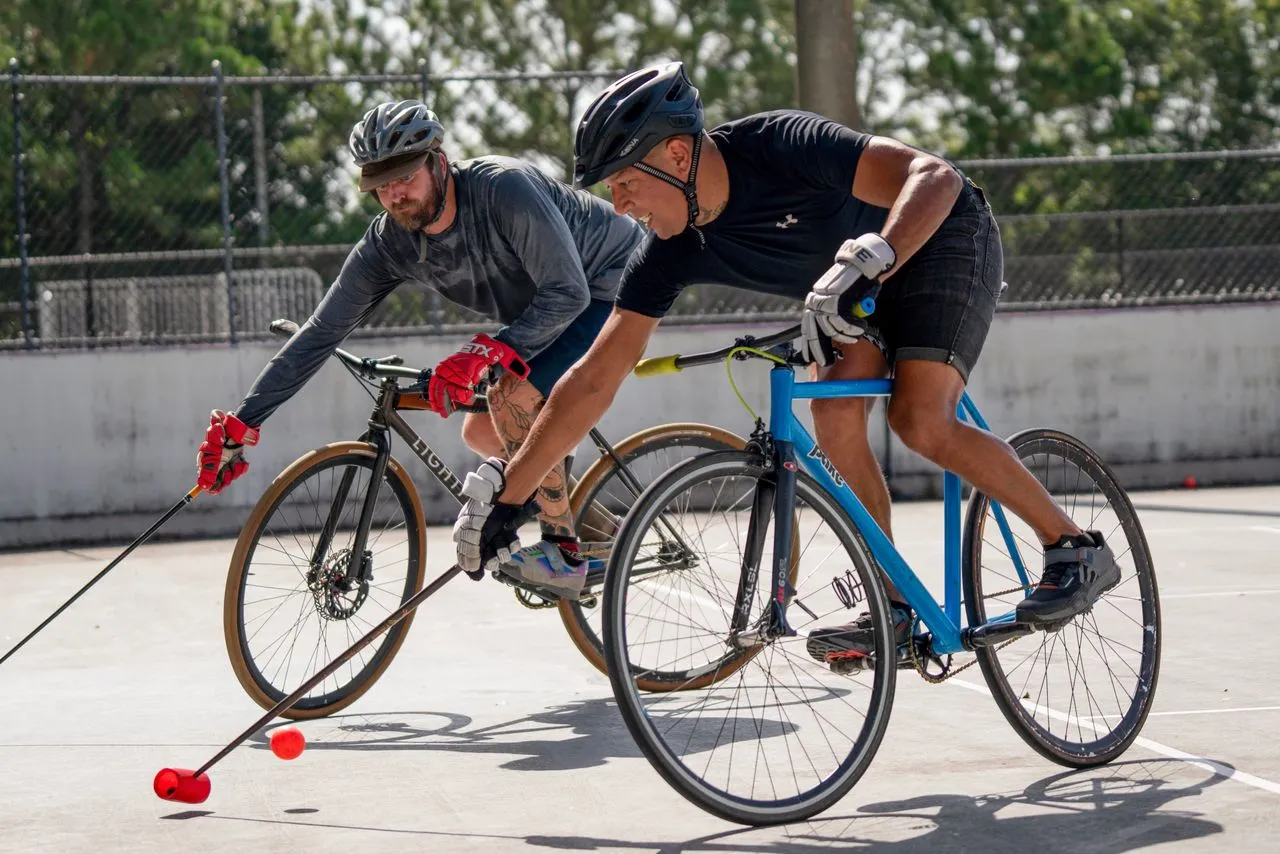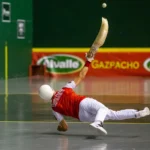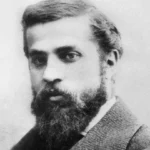
Cycle Polo, a captivating blend of cycling and polo, traces its origins back to the verdant fields of Ireland in 1891. From its humble beginnings on grass courts with wooden mallets, this exhilarating sport has evolved into a global phenomenon, captivating players and fans alike with its fast-paced action, strategic gameplay, and vibrant community spirit. With its rich history, dynamic gameplay, and widespread appeal, Cycle Polo continues to thrive on both local and international stages, uniting enthusiasts from diverse backgrounds in the shared pursuit of athletic excellence and camaraderie.
Birth of a Sport: Cycle Polo emerged in Ireland in 1891, marking the fusion of cycling and polo. Initially played on grass courts with wooden mallets, it quickly gained popularity for its unique blend of athleticism and strategy. The sport’s origins can be traced back to the innovative idea of adapting traditional polo to bicycles, enabling wider participation due to the accessibility of cycling compared to horse riding. This pioneering spirit laid the foundation for what would become a globally recognized sport, with its roots firmly planted in the fields of Ireland.
Global Reach: The establishment of the International Cycle Polo Federation (ICPF) in 1938 heralded a new era of international cooperation and competition in the sport. Over the decades, the ICPF has expanded its membership to over 30 nations, facilitating the growth and development of Cycle Polo on a global scale. Through initiatives such as tournaments, coaching programs, and promotional events, the federation continues to foster camaraderie and sportsmanship among players from diverse cultural backgrounds.
Fast Paced: Cycle Polo unfolds on a compact court measuring 25.5 meters (84 feet) long by 14 meters (46 feet) wide. This relatively small playing area demands quick reflexes, sharp decision-making, and precise bike control from participants. The confined space intensifies the action, creating thrilling moments of close-quarters maneuvering and rapid transitions between offense and defense. The compact dimensions of the court contribute to Cycle Polo’s reputation as a fast-paced and dynamic sport.
Lightweight Steed: In Cycle Polo, players rely on specially designed bicycles that prioritize agility and responsiveness. These bikes typically weigh around 7.7 kilograms (17 pounds), striking a balance between maneuverability and durability. With streamlined frames, responsive handling, and rugged tires, Cycle Polo bikes enable players to navigate the court with ease while executing intricate plays and evasive maneuvers. The lightweight steeds are integral to the fluidity and speed of the game, allowing players to unleash their full potential on the field.
Mallet Matters: The mallet used in Cycle Polo is a crucial tool for controlling and directing the ball during gameplay. Measuring 81.3 centimeters (32 inches) in length, with a mallet head diameter of no more than 7.6 centimeters (3 inches), it offers a balance of reach and precision. Crafted from durable materials such as wood or composite alloys, the mallets withstand the rigors of competitive play while providing the necessary striking power to propel the ball with accuracy and force. The design and construction of the mallet reflect the sport’s emphasis on skillful manipulation and strategic finesse.
The Ball: Central to the action of Cycle Polo is the official ball, typically crafted from wicker or rattan to ensure resilience and aerodynamic performance. With a diameter ranging from 7.6 to 8.3 centimeters (3 to 3.25 inches), the ball is designed to facilitate precise ball control and swift passing between players. Its lightweight yet durable construction enables it to withstand the rigors of competitive play while maintaining its shape and responsiveness on the court. The choice of materials and dimensions for the ball reflects the sport’s tradition and the need for equipment that can withstand the demands of high-speed gameplay.
Team Spirit: A Cycle Polo team comprises three players on the court at any given time, with the option for substitutes to be rotated in during breaks in play. This compact team size fosters close collaboration and communication among players, as they coordinate their movements and strategies to outmaneuver the opposing team. Each player fulfills specific roles, whether as an attacker, defender, or playmaker, contributing to the team’s overall cohesion and effectiveness. The small team size enhances the sense of individual accountability and collective responsibility, creating a dynamic and tightly knit unit on the field.
Short & Sweet: A typical Cycle Polo match unfolds over a brisk 15-minute duration, divided into two halves separated by a 2-minute halftime break. This condensed format adds to the intensity and excitement of the game, as teams vie for supremacy within a limited timeframe. The brief duration of matches demands sustained focus, stamina, and adaptability from players, who must seize every opportunity to capitalize on their opponents’ weaknesses while minimizing their own vulnerabilities. The short, high-energy bursts of gameplay ensure that spectators are treated to a fast-paced and engaging spectacle from start to finish.
Goal Scoring: Goals in Cycle Polo are scored by propelling the ball through the opponent’s goal, a metal hoop measuring 35.6 centimeters (14 inches) in diameter. Achieving this feat requires a combination of precision, power, and strategic positioning, as players maneuver the ball past defenders and evade the goalkeeper’s attempts to block or intercept it. Each successful goal adds to the team’s tally, bringing them closer to victory while infusing the match with moments of jubilation and tension. The act of scoring a goal embodies the essence of Cycle Polo, rewarding skillful execution and decisive play under pressure.
Gearing Up: Safety is paramount in Cycle Polo, prompting players to don protective gear such as helmets, knee pads, and elbow pads before taking to the field. These essential safeguards shield players from potential injuries resulting from collisions, falls, or impacts with the ball or mallets during gameplay. The comprehensive protective gear ensures that participants can focus on the game without compromising their well-being, instilling confidence and peace of mind. By prioritizing safety, Cycle Polo promotes a culture of responsible play and ensures that players can enjoy the sport to its fullest while minimizing the risk of harm.
European Dominance: European nations such as Germany, Switzerland, and France have long been dominant forces in Cycle Polo, showcasing their prowess on the international stage through consistent success in competitions. Their rich tradition in the sport is reflected in the depth of talent, robust infrastructure, and strategic expertise cultivated within their respective cycling communities. These powerhouse nations set the standard for excellence in Cycle Polo, serving as formidable opponents and sources of inspiration for aspiring players worldwide.
Asian Ascendancy: In recent years, Asian teams like India and Japan have emerged as formidable contenders in Cycle Polo, challenging the traditional dominance of European nations and elevating the level of competition on the global stage. Their rise to prominence is fueled by a combination of talent, dedication, and strategic innovation, as well as growing investments in infrastructure and player development. Asian teams bring their unique flair and style to the sport, enriching its diversity and expanding its reach to new audiences across the continent and beyond.
Women in the Game: The inaugural Women’s Cycle Polo World Championship held in 2000 marked a significant milestone in the sport’s history, providing female players with a platform to showcase their skills and compete at the highest level. Germany’s triumph in the tournament underscored the growing talent and enthusiasm among women cyclists, paving the way for greater recognition and participation in the years to come. The inclusion of women’s events in Cycle Polo reinforces the sport’s commitment to gender equality and diversity, fostering a more inclusive and vibrant community of players worldwide.
Youngest Champion: David Byrne of Ireland etched his name in Cycle Polo history by becoming the youngest ever Men’s Singles World Champion at the tender age of 16 in 1988. His remarkable achievement highlighted not only his exceptional talent and determination but also the potential for young players to make a significant impact on the sport’s elite level. Byrne’s success served as inspiration for aspiring athletes around the world, encouraging them to pursue their dreams and strive for excellence in Cycle Polo regardless of age or experience.
Heaviest Bike Challenge: Unlike conventional cycling sports focused on speed and endurance, Cycle Polo places greater emphasis on maneuverability and agility, necessitating specialized bikes tailored to the demands of the game. The record-breaking weight of 23 kilograms (50.7 pounds) for a Cycle Polo bike underscores the unique design requirements aimed at optimizing stability and control during rapid turns and sudden stops. Despite the formidable challenge posed by heavy bikes, players adapt their skills and strategies to harness the advantages offered by these purpose-built steeds, showcasing the sport’s dynamic evolution and technical complexity.
Longest Match: A Cycle Polo marathon unfolded in Germany in 1938, setting the record for the longest match in the sport’s history with a grueling duration of 2 hours and 15 minutes. The endurance test pushed players to their physical and mental limits, requiring unwavering focus, stamina, and resilience to persevere through the extended gameplay. The epic encounter captivated spectators with its intensity and drama, underscoring the enduring appeal of Cycle Polo as a thrilling and captivating sport capable of producing unforgettable moments of sporting excellence.
Most Goals Scored: Germany’s commanding performance in the 2012 Cycle Polo World Championship final saw them achieve a record-breaking feat by scoring an impressive 10 goals, showcasing their offensive prowess and tactical acumen on the grandest stage. The lopsided victory reaffirmed Germany’s status as a dominant force in Cycle Polo, while also highlighting the team’s ability to capitalize on scoring opportunities and maintain relentless pressure on their opponents throughout the match. The record-setting achievement stands as a testament to the skill, teamwork, and determination of the German squad, inspiring future generations of players to aim for greatness in the sport.
Highest Scoring Tournament: The 1950 Cycle Polo World Championship remains etched in history as the highest-scoring tournament to date, with an astonishing average of 23 goals per game. The offensive explosion showcased the dynamic and high-octane nature of Cycle Polo, with teams unleashing a barrage of attacks and showcasing their creative flair in front of goal. The record-breaking tournament captivated audiences with its thrilling displays of skill and athleticism, cementing Cycle Polo’s reputation as a captivating and action-packed sport capable of delivering excitement in abundance.
A Touch of Elegance: The All Ireland Cycle Polo Championships, held annually since 1937, epitomize the sport’s tradition and prestige, attracting top talent to compete on the lush grounds of Dublin’s iconic Phoenix Park. The picturesque setting provides a fitting backdrop for the intense battles and sporting drama that unfold during the tournament, while also showcasing Ireland’s rich heritage and passion for Cycle Polo. The event’s enduring legacy underscores its significance within the global cycling community, serving as a celebration of excellence and camaraderie among players from diverse backgrounds.
A Global Stage: The Cycle Polo World Championship serves as the pinnacle of competition in the sport, bringing together top teams from around the world to vie for glory and honor on the international stage. Held every two years with venues rotating across member countries, the tournament provides a platform for nations to showcase their talent, innovation, and competitive spirit while fostering cross-cultural exchange and friendship among participants. The Cycle Polo World Championship embodies the sport’s ethos of unity, excellence, and fair play, uniting players and fans from different corners of the globe in celebration of their shared passion for Cycle Polo.
Indoor vs Outdoor: While traditionally played outdoors on grass courts, Cycle Polo can also be adapted for indoor venues with wooden or synthetic surfaces. The versatility of the sport allows for year-round play regardless of weather conditions, while indoor facilities offer additional opportunities for training, competition, and spectator engagement. Indoor Cycle Polo retains the fast-paced and dynamic nature of the outdoor game while introducing unique challenges and strategic considerations due to the controlled environment and surface characteristics.
Grassroots Appeal: Cycle Polo enjoys a strong presence in universities and colleges across Europe, where it has established vibrant and active club communities. These grassroots initiatives provide opportunities for students to participate in organized competitions, social events, and recreational riding, fostering a sense of camaraderie and sportsmanship among participants. University Cycle Polo clubs serve as incubators for talent development, nurturing the next generation of players and contributing to the growth and sustainability of the sport at the grassroots level.
Trick Shot Challenge: An exhilarating aspect of Cycle Polo is the popular exhibition of trick shots, where players showcase their mastery of the mallet and bike control through a series of jaw-dropping maneuvers and stunts. These dazzling displays of skill and creativity captivate audiences and inspire admiration for the athleticism and precision required to execute such feats. Trick shot challenges add an element of spectacle to Cycle Polo events, highlighting the sport’s entertainment value and the ingenuity of its players in pushing the boundaries of what is possible on the field.
A Spectator Sport: Cycle Polo matches offer thrilling entertainment for spectators, drawing them into the excitement of the game with its fast-paced action, dramatic moments, and strategic battles. The close proximity of the playing area allows fans to feel fully immersed in the action, while the high-energy atmosphere and passionate displays of skill and determination by the players create an electrifying ambiance. Whether watching from the sidelines or cheering from the stands, spectators of Cycle Polo are treated to an unforgettable experience filled with suspense, excitement, and admiration for the athletes’ prowess.
More Than Just a Sport: Beyond its competitive aspect, Cycle Polo fosters a strong sense of community and camaraderie among players, who often form lasting friendships and bonds through their shared passion for the sport. International competitions serve as occasions for cultural exchange and mutual respect, transcending geographical boundaries and uniting players from diverse backgrounds in the spirit of sportsmanship and fellowship. Cycle Polo’s ability to forge connections and bridge differences underscores its value as more than just a sport, but also a vehicle for promoting understanding, cooperation, and mutual appreciation among people from around the world.
Here are some FAQs about Cycle Polo:
Is Cycle Polo difficult to learn?
Cycle Polo requires a combination of cycling skills, hand-eye coordination, and quick thinking. While the basic rules are easy to understand, mastering the mallet control, maneuvering the bike with one hand, and strategic teamwork takes practice. However, many clubs offer beginner-friendly sessions with modified rules and equipment to ease players into the sport.
How physically demanding is Cycle Polo?
Cycle Polo involves short bursts of intense activity with quick turns and sprints. It requires good cardiovascular endurance, upper body strength for mallet control, and core strength for maintaining balance on the bike during sharp maneuvers. The fast pace can be demanding, but players of all fitness levels can enjoy the sport, with the intensity scaling based on competition level.
What kind of bike do I need for Cycle Polo?
Unlike traditional bicycles, Cycle Polo bikes are specifically designed for agility and maneuverability on a small court. They are lightweight (around 7.7 kilograms) with a single fixed gear for easy control. The handlebars are typically flat or slightly raised for better mallet handling. Most clubs have rental bikes for beginners, and specialized Cycle Polo bikes can be purchased from sporting goods stores or online retailers.
Is Cycle Polo a dangerous sport?
Safety is a priority in Cycle Polo. Players wear helmets, knee pads, and elbow pads to minimize the risk of injury during falls or collisions. The padded mallet heads and the small court size also contribute to a lower risk of serious injuries compared to some other cycling sports. However, as with any physical activity, there’s always a chance of minor scrapes or bruises, so maintaining proper control and playing within your limits is crucial.
How can I get involved in Cycle Polo?
The best way to get started with Cycle Polo is to search online for Cycle Polo clubs in your area. Many clubs offer introductory sessions or “come-and-try” events where you can learn the basics, try out the equipment, and see if the sport is a good fit for you. National governing bodies for Cycle Polo in your country might also have resources to help you find local clubs or upcoming events.









